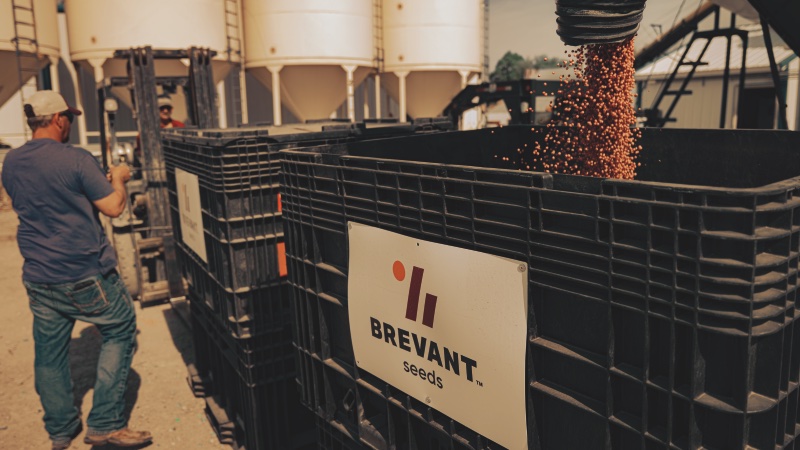Water In Iowa: The War Intensifies
Every four years, Iowa gets the privilege of kicking off the process that elects the next president of the U.S. But now, industry watchers fear the Hawkeye State could end up determining how the entire agricultural marketplace manages its water usage. And unlike a typical caucus fight, the battle between the state’s water managers and farm managers could end up downright bloody if observers are correct in their predictions.

Doug Gross, Iowa Agribusiness Association
“We have a war going on in your neighboring state, and in the crosshairs of that war is production agriculture,” said Doug Gross, Legal Counsel for the Iowa Agribusiness Association, speaking at the 2016 Illinois Fertilizer & Chemical Association meeting in mid-January. “The outcome of this war will be highly significant for the entire Midwest.”
Part of the reason this war could be so significant to growers and ag retailers across the Midwest, said Gross, ties back to just how big an industrywide enterprise agriculture is in the state. Based upon his own research, Iowa trails only California in terms of deriving its income from the business of growing crops. “If you look at any state that really focuses and thrives on agriculture, it’s Iowa,” he said. “This is a war between the Des Moines Water Works (DMWW), which provides water to more than 650,000 people in the state, and the rest of Iowa regarding agriculture. Up until now, you’ve never really had fights between urban and rural folks here because of the strong ties most people have to someone who makes their living from an agricultural business.”
In addition, better water management by the agricultural industry in Iowa is also not new. According to Gross, the DMWW have had a de-nitrification facility in place since the 1990s to remove excess nitrates out of the water supply during peak rainy times of the year, usually during the spring and fall.
Besides this measure, growers in Iowa have been working on reducing the amount of nitrate runoff that ends up in the Mississippi River each year, a by-product of the ongoing hypoxia issue that has plagued parts of the Gulf of Mexico since the mid-2000s.
“Iowa has had a voluntary nutrient reduction strategy in place to reduce runoff by 45% for several years,” said Gross. “However, the cost to put all these measures in place is estimated to be around $4.5 billion, so the implementation of these plans has been a bit slow to develop.”
DMWW Lawsuit Details
The real water problem in Iowa started back in 2012, said Gross, with a pair of incidents. The first was the hiring of Bill Stowe as CEO/Director for the DMWW. A practicing lawyer and engineer, Gross described Stowe as “very intelligent and extremely good at public relations.”
The second was the weather in Iowa that year. Following the extended drought conditions that gripped much of the Midwest during 2012-13, rainstorms caused what Gross referred to as a “flush” to occur, which washed many applied nitrates out of the soil. Press releases from the DMWW in 2013 said the utility experienced “extremely high nitrate concentrations” during the spring and summer of that year. To reduce these levels to the 10 milligrams per liter standard for drinking water set by EPA, DMWW was forced to run its de-nitrification plant at a cost of almost $1 million. The following year, in December 2014, the utility operated the plant for 96 days during the winter months at a cost of more than $500,000 in operations and additional expenses.
Tired of footing these additional expenses, DMWW’s Stowe in early 2015 announced his utility would no longer pay to take the additional nitrates out of the drinking water supply. Instead, Stowe wanted the people who he believed were causing the nitrate pollution upstream from the Des Moines and Raccoon Rivers to pay for the de-nitrification plant operation. “So one year ago this month, Stowe sent a notice of intent to sue three drainage districts in Northcentral Iowa — Sac, Buena Vista, and Calhoun — to force them to comply with the Clean Water Act.”
At first, said Gross, observers believed the DMWW wouldn’t be able to go through with this lawsuit because the Iowa state constitution specifically says that drainage districts can’t be sued, and this decision was affirmed in an Iowa Supreme Court ruling in 2012. “But Stowe decided to sue anyway and he found a judge named Mark Bennett to move the case forward,” he said.
In the lawsuit, the DMWW has three points of contention: That the three drainage districts in question don’t have National Pollutant Discharge Elimination System (NPDES) permits (which are usually reserved for factories to discharge water from their facilities), that the districts are in violation of the Clean Water Act of Iowa, and that the discharge water unsuitable for public use represents a form of trespass on DMWW property. “In all, the lawsuit is seeking $80 million in damages from the drainage districts and that they be shut down until NPDES permits are obtained,” said Gross.
A ‘Genius’ Move
According to Gross, the lawsuit has been effective so far because it targets drainage districts, which by design don’t have the vast financial resources at their disposal. “That’s part of the genius of Bill Stowe,” he said. “He sued organizations in Iowa that don’t have the ability to defend themselves. Yet his own board has already approved a $750,000 war chest for DMWW to draw from to pursue the lawsuit.”
Another important part of the DMWW lawsuit, he said, is it targets drainage districts in a part of Iowa that would be unfarmable if it wasn’t for the presence of drainage tiles. “Farming would not be possible in this part of the state without tile use,” he said. “Without them, this would all be swampland and everyone would be hunting ducks there, not farming.”
In Gross’ mind, the DMWW lawsuit outcome might very well hinge on the definition of groundwater vs. storm water.
Historically, he said, the common perception among geological experts in Iowa is that the water being discharged by drainage tiles in the state come from storm water runoff, not groundwater. “This is significant because agricultural storm water runoff is exempt from the Clean Water Act, but the question of what constitutes agricultural storm water runoff has never been litigated before,” said Gross. “Stowe, as a former engineer, contends that this is actually groundwater discharge, not storm water, and if the court decides this is indeed the case, then any discharge water coming from farm drainage tiles in the state can be regulated under the Clean Water Act.”
The danger for agriculture on all of this, said Gross, is if DMWW succeeds in its lawsuit, the ramifications will spread well beyond the Iowa state borders. “If the agricultural storm water exemption is eliminated in Iowa, it’s no longer a question of state law. It becomes a federal law question,” he said. “If that happens, this decision will likely impact every single drainage district across the entire country.”
Ag retailers would likely suffer as well, he added, considering that most grower-customers rely on these advisers when making their crop input usage decisions. “A ruling in DMWW’s favor would probably mean not only would all water coming from farm drainage tiles would be regulated, but any chemicals and fertilizers being used on these acres would be under regulatory supervision, too,” said Gross.
At the moment, he concluded, a trial date for the case is set for August 8, which may or not be delayed once the discovery phase gets underway. “No matter what happens in this case, I believe the losing side will end up appealing, and things will move from the Court of Appeals all the way to the U.S. Supreme Court,” said Gross. “If that’s the case, the DMWW lawsuit will end up costing millions of dollars and we might not see a final decision for several more years.”






